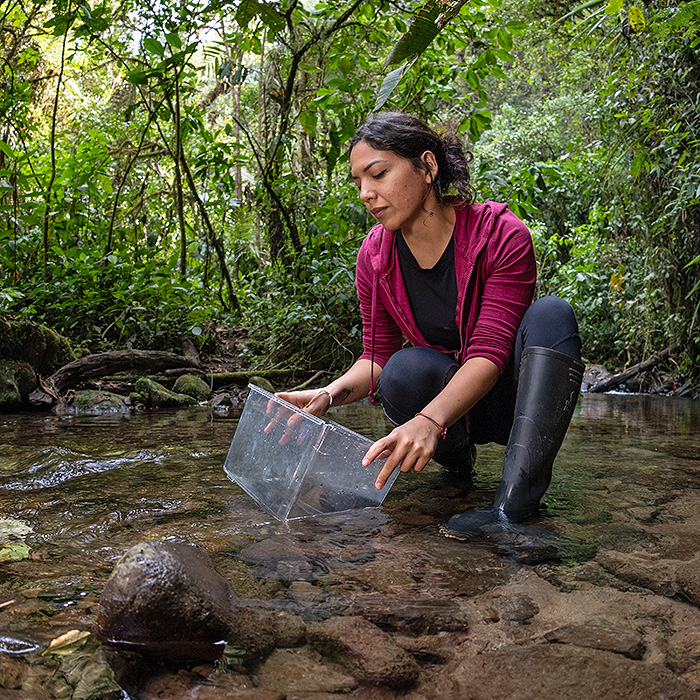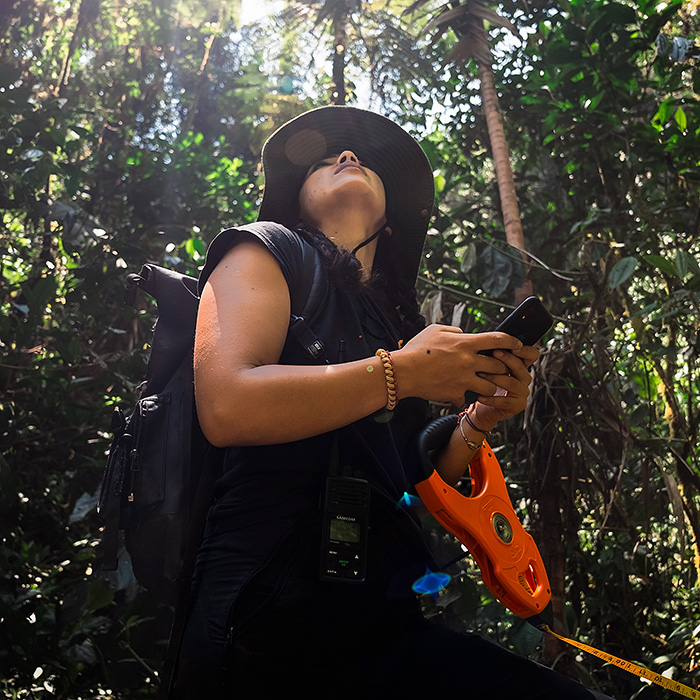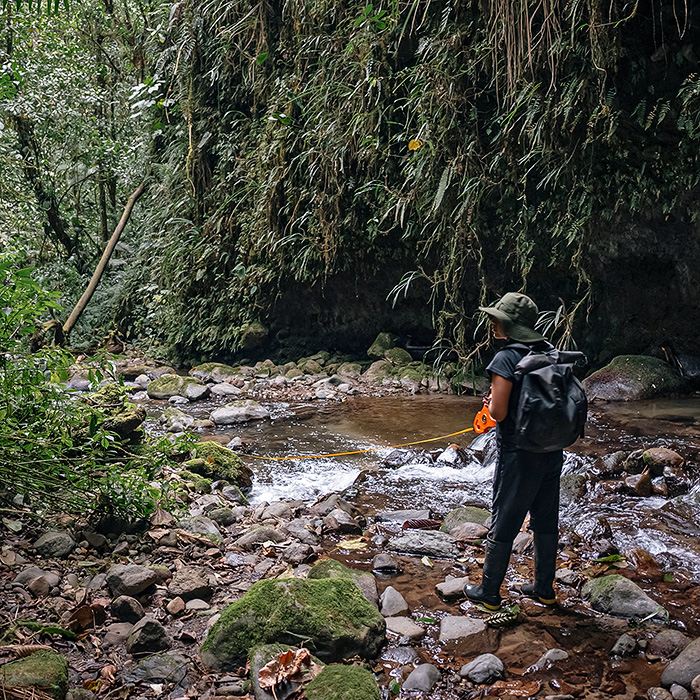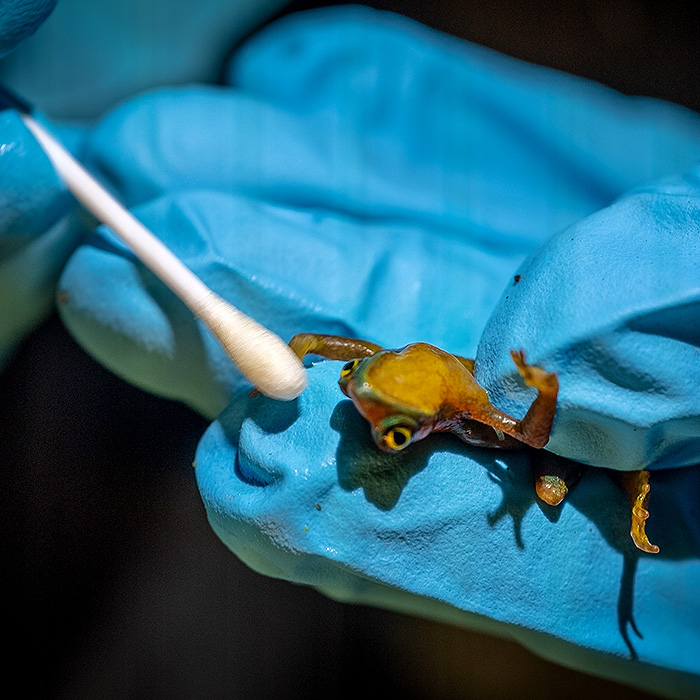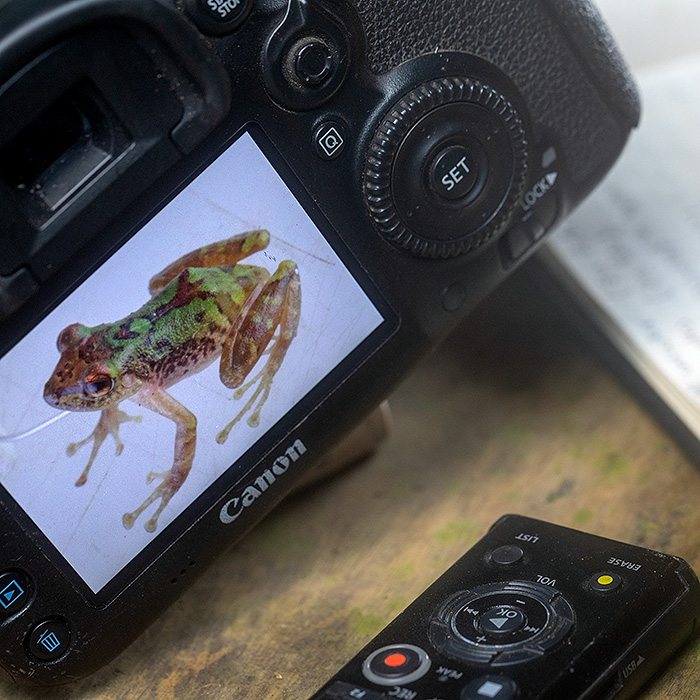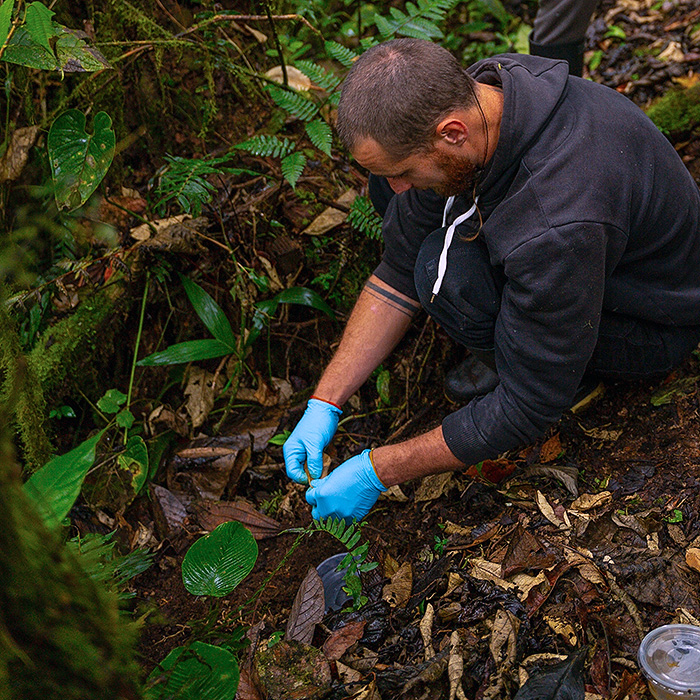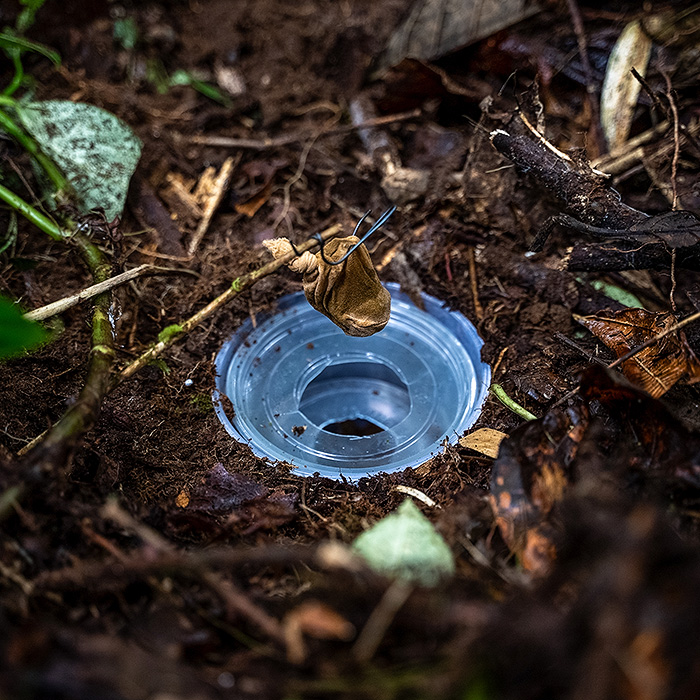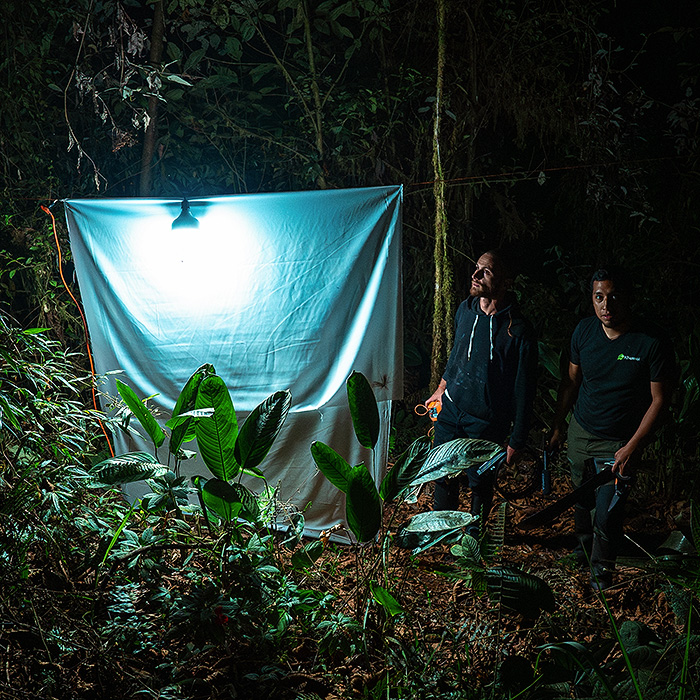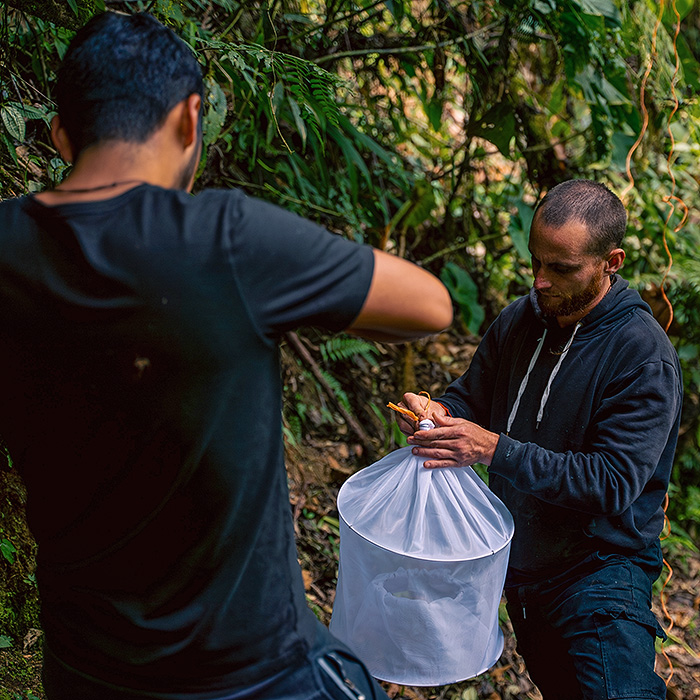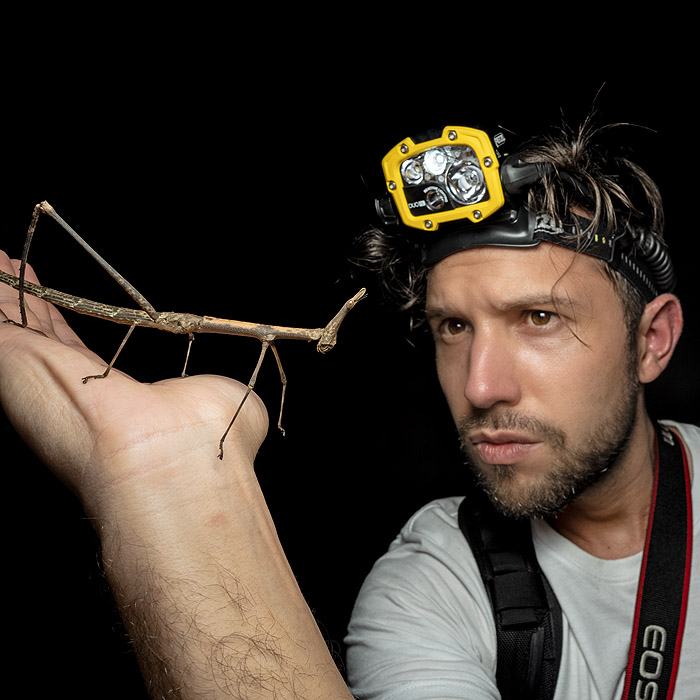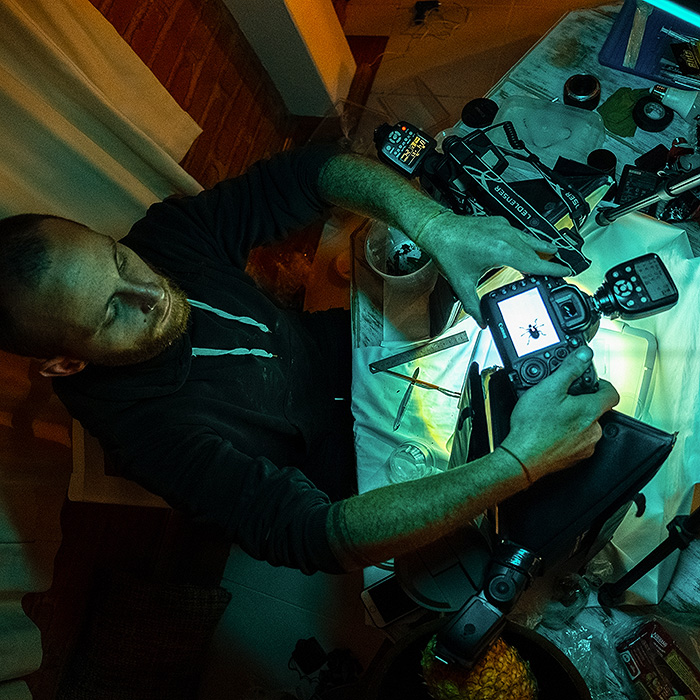Khamai Foundation is offering the opportunity for a select group of 2–6 supporters to join our team of researchers and park rangers in Ecuador for a specific mission: to complete the BioBlitz needed to consolidate the creation of two protected areas (Pitalala Reserve in the Amazon rainforest and Arlequín Reserve in the Mindo cloud forest). Elegible participants will gain boots-on-the-ground field experience with renowned biologists and photographers.
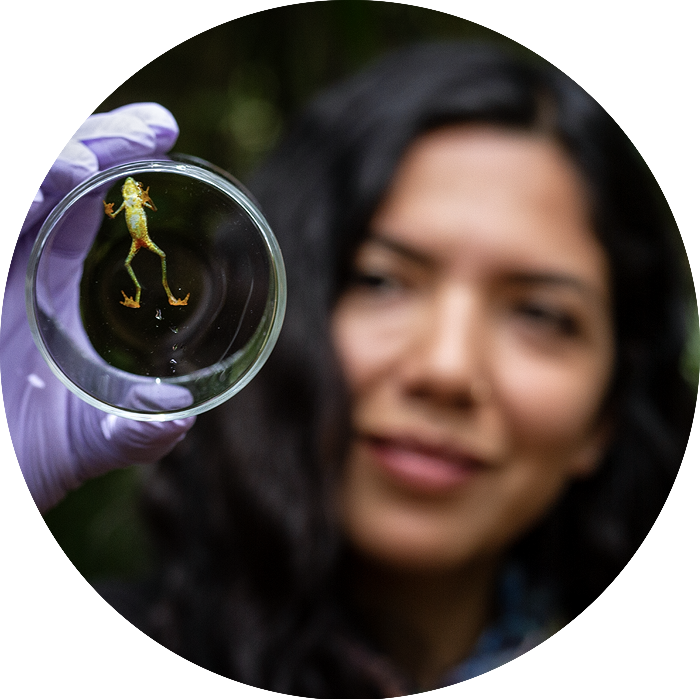
Amanda Quezada
Amphibian expert
Specialist on amphibian surveys and currently in charge of monitoring four Atelopus species.
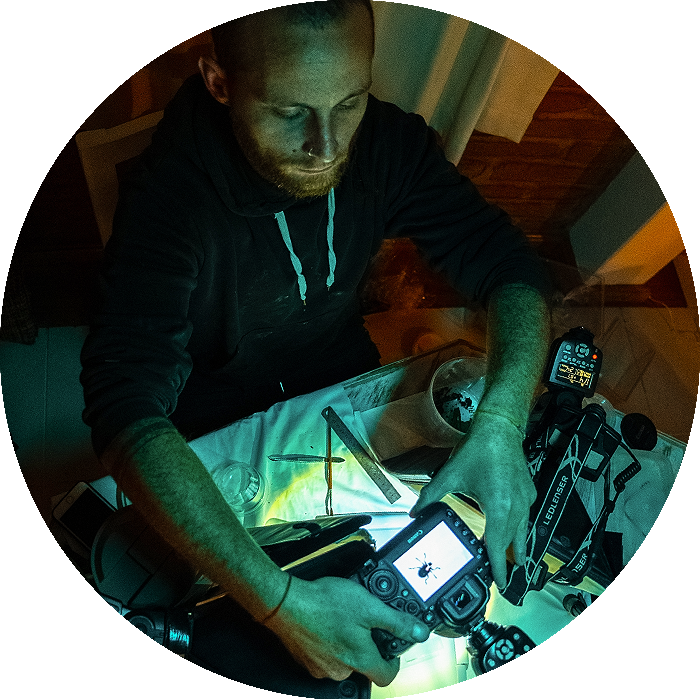
Jose Vieira
Scientific photography expert
Founder of ExSitu and author of 14 posters on arthropods, fish, mammals, amphibians, and reptiles.

Alejandro Arteaga
Reptile expert
Author of three books (including Reptiles of Ecuador) and 27 scientific articles on herpetology.
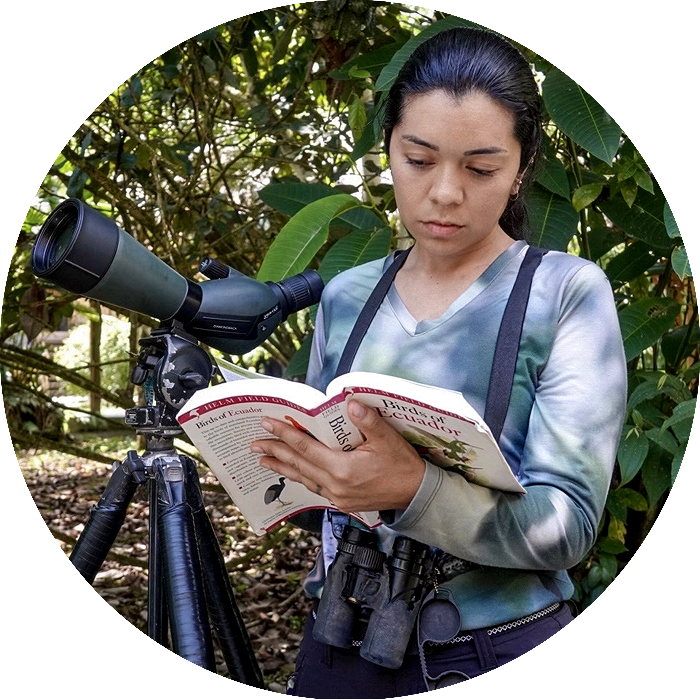
Ana Santacruz
Bird specialist
National tour guide specialized on bird identification in forested environments of Ecuador.
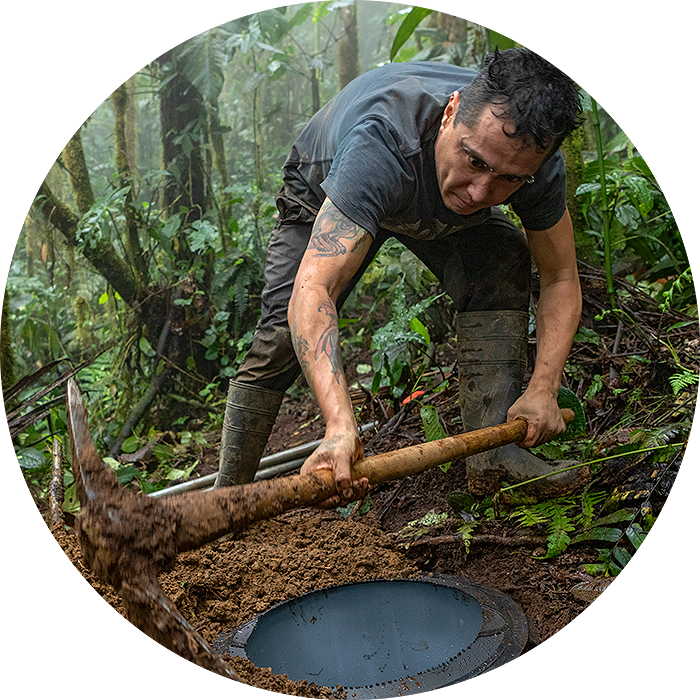
Carlos Nivelo
Mammal expert
Mammalogist, taxonomist, and author of more than 30 research articles on mammals of Ecuador.
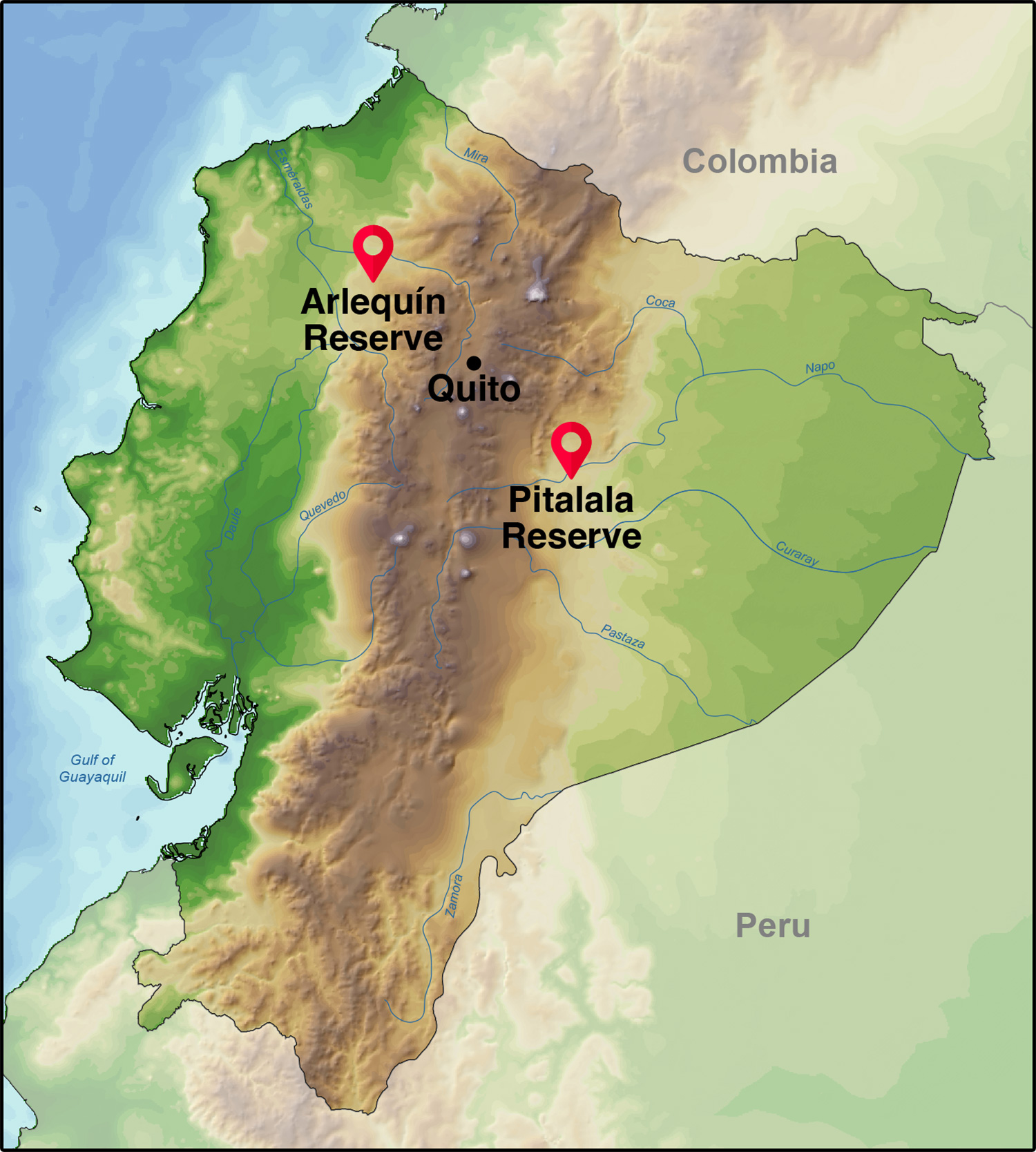
BioBlitz details
Description: A bioblitz is an organized on-the-ground event where scientists, volunteers, and community members come together to document as many species as possible in a specific area over a set period of time. The goal is to gather data on biodiversity and increase awareness of local wildlife.
Donation amount needed: $3,980
Number of nights: 9 (1st in Quito)
Starting date: Variable, see form
Group size: 2–6 people. 3 spots left
| Night 1 | Quito |
| Nights 2–5 | Pitalala Reserve |
| Nights 6–9 | Arlequín Reserve |
| Day 10 | Departure flights |
Who is elegible to participate?
We are seeking supporters who will contribute to the field campaign rather than hinder it. The following is required:
Proactivity and willingness to learn from biologists rather than passively waiting to be spoon-fed instructions.
Independence or not needed to be babysitted every minute of the day.
An understanding that this is not a tour, but a research expedition where the main goal is to study biodiversity.
Excellent physical condition and no major allergies or health complications that may interrupt the field campaign.
Awareness of the role that scientific collecting plays in field biology.
A great attitude and respect for nature and local people.
How to reserve your spot?
Read our cancellation policy below.
Complete the contact form in the next step to let us know about your interests and experience and so we can check whether you are a good fit for the BioBlitz team.
Review and approve the itinerary, invoice, and release of liability form we will send you.
Make donation to confirm your booking.
Cancellation policy: If you are unable to attend the BioBlitz, you are welcome to send another suitable candidate in your place or join another BioBlitz. However, because your participation in this event is only possible via a donation, we do not offer refunds.
Important! Read the rules and recommendations.
What to bring? Check out our suggested packing list.
What is included?
All meals and shared accommodation.
All road transfers.
Field equipment for BioBlitz.
Entrance fees to the reserves.
What is not included?
Additional nights due to flight cancellations.
Alcoholic beverages, bottled water, and snacks.
Health insurance.
International and domestic airfares.
Laundry.
Photo equipment.
Application form
You’ll be here |
You’ll be here |
BioBlitz description
The Khamai BioBlitz is an organized on-the-ground event where scientists, park rangers, and volunteers come together at the two reserves of the foundation (Pitalala Reserve in the Amazon rainforest and Arlequín Reserve in the Mindo cloud forest) to document as many species of reptiles, amphibians, insects, birds, and mammals over an intensive 8-night field campaign. The goal is to build comprehensive faunal lists and photo identification posters to gain further support for protecting these two reserves. To achieve this goal, a diverse array of field techniques and activities are implemented, including setting up and visiting traps (camera traps, pitfall traps, light traps, baited traps, mist nets, and sherman traps), diurnal and nocturnal surveys along transects, river quadrants, and scientific white background photography. Notably, at Arlequín Reserve, participants will join the census of the Mindo Harlequin Toad, aimed at determining the status and health of the population of this critically endangered amphibian. Some of the main activities are illustrated below.
Frequently asked questions |
Am I supposed to donate the full amount at once? You can confirm your participation in the BioBlitz by making a deposit corresponding to 50% of the total donation. Then, you can complete the second part at least 60 days before the start of the event. |
Does the BioBlitz take place during the nights? The BioBlitz includes both diurnal and nocturnal activities. |
How do I book my spot? The first thing you need to do to reserve your spot in the BioBlitz is apply using our booking form. If you are a found to be a good fit for the team, you will need to review and approve the itinerary, invoice, and release of liability we will send you. Finally, you will have to make a donation to confirm your participation. |
Can you get rubber boots for me? We suggest you bring your own rubber boots as you should test whether they fit comfortably before arriving in Ecuador, where you will used them every day. |
Is there any chance to rent a snake hook? You are welcome to borrow one of our snake hooks during the BioBlitz. |
What gear do you recommend I bring? We recommend that you bring a durable waterproof headlamp, a rain poncho, and a DSLR camera, ideally one with a macro lens and off-camera flash. |
Will I have to share a room? Yes. The lodging facilities at the two reserves are currently not large enough to allow for participants to have single rooms. |
What is the meeting point on the starting day? Our team will pick you up at Puembo Birding Garden, a beautiful hostel in the outskirts of Quito. |
What kind of trouser is needed? You can bring any durable but lightweight trousers that are easy to dry. |
Which vaccination certificates do I need? The three most important vaccines to get before visiting the tropics are against yellow fever, tetanus, and hepatitis. Proof of yellow fever vaccination may be required to enter Ecuador for travelers having recently visited a country where yellow fever is present. |
Is there malaria in the reserves? Malaria is present in some areas of Ecuador, although not particularly abundant in the sites we will be visiting during this BioBlitz. The decision to take anti-malaria prophylaxis is left to each participant. Please consult your physician regarding which tablets will be most suitable for you. |
Will there be laundry service, electricity, and wifi at all sites? At Arlequín Reserve, there is electricity and wifi unless trees fall on the power lines. At Pitalala Reserve, there is electricity and wifi unless the Ecuadorian government declares programmed power outages. You may do your own laundry at Arlequín Reserve. At Pitalala Reserve, laundry service is available, but not included. |
Will you pick us up at the airport upon arrival? Yes, a member of our team will pick you up at the airport. |



